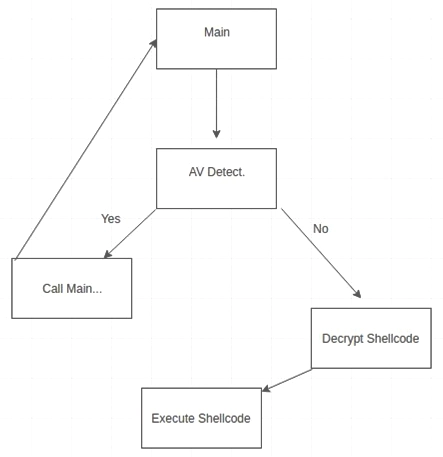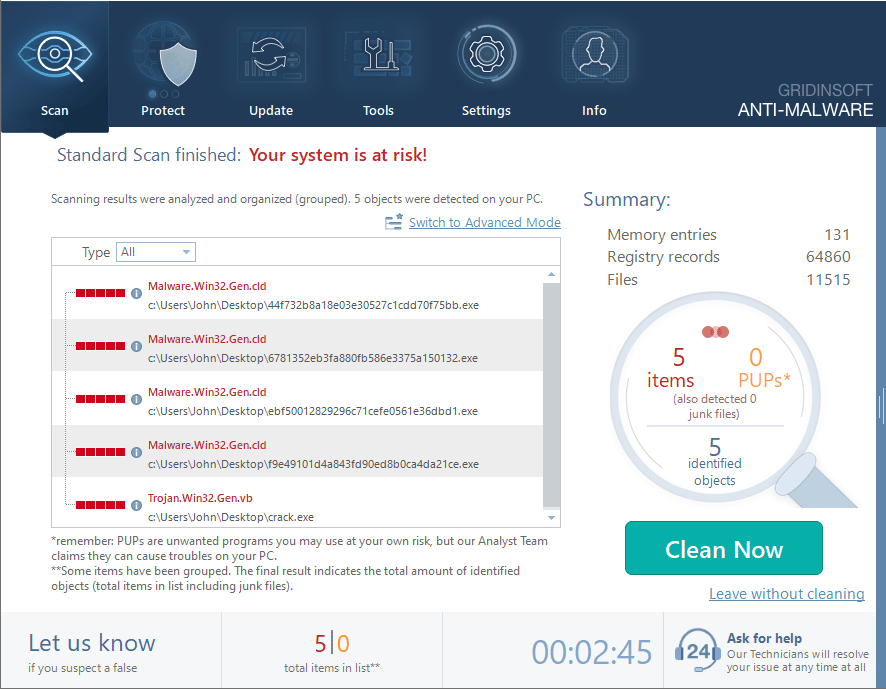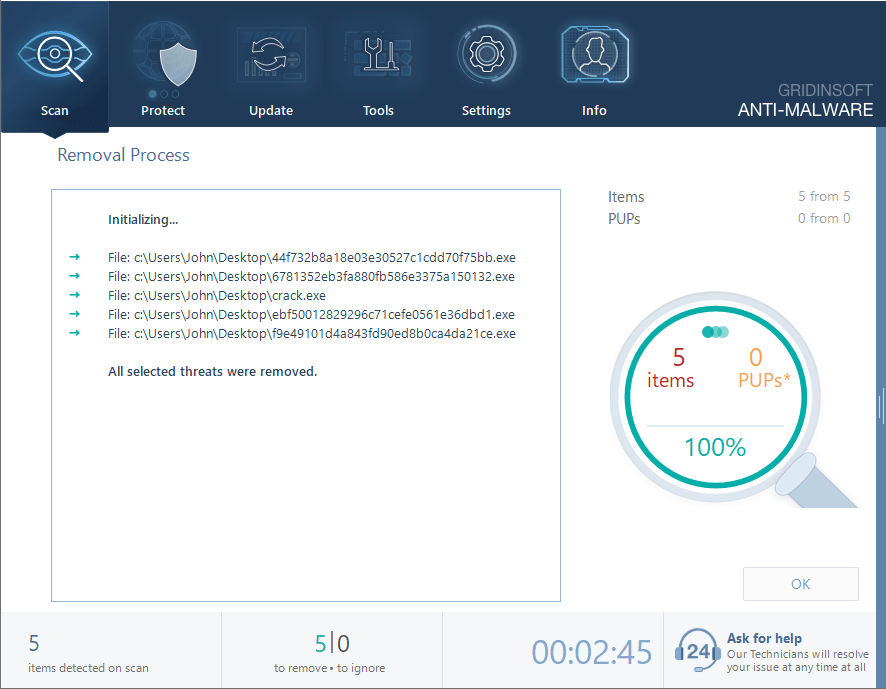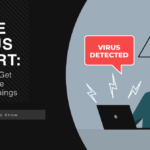Heuristic virus detection is like having a cybersecurity detective who can spot criminals even when they’re wearing disguises. While traditional antivirus software relies on mugshots of known bad guys (virus signatures), heuristic analysis uses behavioral patterns and educated guesses to catch new threats that have never been seen before. It’s the difference between checking IDs at a nightclub versus watching for suspicious behavior.
Detection Summary
| Detection Method | Heuristic Analysis / Behavioral Detection |
| Primary Function | Identify unknown malware through behavioral patterns and code analysis |
| Detection Techniques | Dynamic scanning, file analysis, multi-criteria analysis, AI/ML algorithms |
| Common Indicators | Suspicious network activity, file modifications, privilege escalation attempts |
| Accuracy Level | Moderate to High – Prone to false positives but catches zero-day threats |
What Exactly Is a “Heuristic Virus”?
Here’s where things get interesting: there’s technically no such thing as a “heuristic virus.” The term “heuristic virus” is actually cybersecurity slang that users created to describe malware caught by heuristic detection systems. It’s like calling someone a “radar speeder” – the radar didn’t make them speed, it just caught them doing it.
When your antivirus software flags something as a heuristic detection, it’s essentially saying: “I don’t have this exact threat in my database, but it’s acting like malware I’ve seen before.” This method is crucial for catching brand-new viruses, sophisticated variants, and zero-day exploits that haven’t made it into traditional virus definition databases yet.

Think of it this way: if traditional antivirus detection is like having a bouncer with a list of banned troublemakers, heuristic detection is like having a bouncer who can spot trouble even when the troublemaker isn’t on the list. They might notice someone acting suspiciously, trying to sneak around, or exhibiting behaviors that scream “I’m up to no good.”
The Detective Work: How Heuristic Detection Actually Works
Heuristic detection operates like a digital forensics expert, using adaptive antivirus protection systems that make educated guesses based on behavioral evidence. Unlike signature-based detection, which is like matching fingerprints to a criminal database, heuristic analysis is more like profiling – it looks for patterns that suggest criminal intent.
The system tracks red flags that would make any security professional nervous: unusual network connections that shouldn’t exist, files being modified in suspicious ways, programs trying to hide their activities, or software attempting to disable security features. It’s the digital equivalent of noticing someone wearing a trench coat in summer, carrying bolt cutters, and lurking around your neighborhood at 3 AM.
The beauty of this approach is its flexibility. Traditional methods need to know exactly what they’re looking for, but heuristic systems can adapt and evolve. The longer they run, the smarter they become – like a security guard who gets better at spotting trouble after years on the job. Unfortunately, this learning process is resource-intensive and sometimes results in false alarms that need manual verification.
Modern antivirus companies have started incorporating automation and machine learning to speed up this process. This has dramatically improved the detection of malware that would otherwise slip through traditional defenses, though it’s still not perfect. The complexity of modern malware continues to challenge even the most sophisticated detection systems.
The Three Pillars of Heuristic Analysis
Dynamic Scanning: The Digital Interrogation Room
Dynamic scanning is like putting a suspect in an interrogation room and watching how they behave. The system executes suspicious files in a controlled environment called a “sandbox” – essentially a digital prison where malware can’t escape or cause real damage.
Here’s where it gets interesting: modern malware isn’t stupid. Many sophisticated threats have developed anti-analysis features that work like criminal counter-surveillance. When they detect they’re being watched in a virtual environment, they go dormant, pretending to be innocent programs. Ironically, this behavior itself becomes a red flag – legitimate software doesn’t usually care if it’s running in a virtual machine.

It’s an ongoing cat-and-mouse game between security researchers and cybercriminals, with each side constantly adapting to counter the other’s tactics.
File Analysis: Reading Between the Lines of Code
File analysis is like being a literary critic, but instead of analyzing poetry, you’re examining malicious code. Security systems dissect files to understand their structure, purpose, and intentions by examining code patterns, imported libraries, and function calls.
For example, why would a simple calculator app need permission to access your webcam, modify system files, or create hidden network connections? These inconsistencies between a program’s stated purpose and its actual capabilities are major red flags that heuristic systems are trained to catch.
The analysis also includes comparing suspicious files to known malware samples. It’s like forensic handwriting analysis – even if the exact document is new, similar writing patterns can reveal the author’s identity.
Multi-Criteria Analysis: The Cybersecurity Credit Score
Multi-criteria analysis (MCA) works like a credit scoring system for software. Instead of evaluating financial reliability, it assesses malicious potential by weighing multiple risk factors simultaneously.
Each suspicious behavior gets assigned points: network connections to known bad servers might score 20 points, attempts to modify system files could add 15 points, and trying to disable antivirus software might contribute another 25 points. When the total score exceeds a predetermined threshold, the file gets flagged as malicious.
This approach is more nuanced than simple yes/no decisions. A file might exhibit one or two mildly suspicious behaviors without being malicious, but the combination of multiple red flags creates a pattern that’s hard to ignore.
Real-World Detective Story: Catching Trojan:Win32/Acll
Let me walk you through a recent case that perfectly illustrates how heuristic detection works. We recently analyzed Trojan:Win32/Acll, a Python-based stealer that traditional signature detection might miss because of its programming language and obfuscation techniques.
The first red flag was this command sequence:
schtasks /create /f /RU "%USERNAME%" /tr "%ProgramData%\WinTrackerSP\WinTrackerSP.exe" /tn "WinTrackerSP HR" /sc HOURLY /rl HIGHEST
C:\Windows\System32\wuapihost.exe -Embedding
Translation: “Run this program every hour with the highest possible privileges and load additional applications.” That’s like someone asking for keys to your house, your car, and permission to invite friends over whenever they want.
The second smoking gun was the malware’s data collection behavior, targeting these specific folders:
C:\Program Files\Common Files\SSL\cert.pem
C:\Users\user\AppData\Local\Coinomi\Coinomi\wallets
C:\Users\user\AppData\Roaming\Electrum\wallets
C:\Users\user\AppData\Roaming\Ethereum\keystore
C:\Users\user\AppData\Roaming\Exodus\exodus.wallet
C:\Users\user\AppData\Local\Google\Chrome\User Data\
C:\Users\user\AppData\Local\Microsoft\Edge\User Data\
This is the digital equivalent of a burglar carrying a shopping list that includes “jewelry box, safe combination, bank statements, and cryptocurrency wallets.” The behavior pattern screams “information stealer” to any heuristic system worth its salt.
Spotting Heuristic Detections in the Wild
Heuristic detections have their own naming conventions that make them relatively easy to identify. They often include cryptic names, behavioral descriptions, or the telltale “!ML” suffix that indicates machine learning involvement.
Here are some common examples you might encounter:
Trojan:Script/Wacatac.B!ml – This detection typically indicates spyware or stealer malware with extended persistence capabilities and suspicious networking behavior. The “!ml” suffix shows it was caught by machine learning algorithms.
IDP.Generic – Standing for “Identity Protection” and “Generic,” this catch-all detection flags potentially harmful files that don’t fit into specific malware categories. It’s like a security system saying “something’s not right here, but I can’t put my finger on exactly what.”
Malware.Win32.Heur.cc – This is a perfect example of generic heuristic naming. The “Heur” clearly indicates heuristic detection, and the generic suffix suggests it could be almost any type of malicious program.
Trojan:Win32/Acll – This detection combines behavioral analysis with programming language recognition, specifically flagging Python-based spyware.
VirTool:Win32/DefenderTamperingRestore – Microsoft Defender uses this specific detection for software that attempts to interfere with Windows security features. It’s behavioral detection at its most specific.
All these detections, despite targeting different malware types, share the common thread of being identified through behavioral analysis rather than exact signature matching.
The AI Revolution in Malware Detection
The integration of artificial intelligence into heuristic detection has been a game-changer for cybersecurity. Traditional heuristic systems rely on predetermined rules and patterns, but AI can identify subtle correlations that human programmers might miss.
Modern AI-powered detection systems notice things that would escape human analysis: minute code similarities, unusual timing patterns in network communications, or subtle behavioral combinations that indicate malicious intent. It’s like having a detective with superhuman pattern recognition abilities.
The “!ml” suffix you see in many modern detections stands for “machine learning,” indicating that artificial intelligence played a role in identifying the threat. While these AI-assisted detections still produce false positives, the accuracy rate has improved significantly compared to traditional heuristic methods.
Advanced antivirus companies are increasingly incorporating AI into their products, creating hybrid systems that combine human expertise with machine learning capabilities. This trend represents a significant evolution in cybersecurity, making it possible to catch threats that would otherwise remain undetected.
The False Positive Problem: When Good Software Gets Accused
The biggest challenge with heuristic detection is the false positive problem – legitimate software getting flagged as malicious. It’s like an overzealous security guard who tackles everyone who looks suspicious, including innocent visitors.
False positives occur because heuristic systems make educated guesses based on behavioral patterns. Sometimes legitimate software exhibits behaviors that coincidentally match malicious patterns. System utilities, debugging tools, and even some games can trigger heuristic alerts because they perform low-level system operations.
The good news is that false positive rates have decreased significantly as AI and machine learning improve detection accuracy. Modern systems are better at distinguishing between legitimate system tools and actual malware.
If you encounter a heuristic detection on software you trust, research the specific detection name and consider submitting the file to your antivirus vendor for analysis. Reputable security companies maintain processes for reviewing and correcting false positive detections.
Removing Heuristic-Detected Malware
When heuristic systems detect actual malware, removal requires specialized tools designed to handle unknown and polymorphic threats. Standard signature-based removal might miss components that weren’t specifically identified.
For comprehensive malware removal, we recommend using GridinSoft Anti-Malware, which combines traditional signature detection with advanced heuristic analysis and AI-powered threat identification. This multi-layered approach ensures that both known and unknown threats are properly identified and removed.
The software can work alongside Windows Defender, providing additional protection without conflicts. This is particularly important for heuristic detections, where multiple analysis engines can provide better accuracy and reduce false positive rates.

Download and install Anti-Malware by clicking the button below. After the installation, run a Full scan: this will check all the volumes present in the system, including hidden folders and system files. Scanning will take around 15 minutes.
After the scan, you will see the list of detected malicious and unwanted elements. It is possible to adjust the actions that the antimalware program does to each element: click "Advanced mode" and see the options in the drop-down menus. You can also see extended information about each detection - malware type, effects and potential source of infection.

Click "Clean Now" to start the removal process. Important: removal process may take several minutes when there are a lot of detections. Do not interrupt this process, and you will get your system as clean as new.

The Future of Behavioral Threat Detection
Heuristic detection continues evolving as cybercriminals develop more sophisticated evasion techniques. The future lies in advanced AI systems that can understand context, recognize subtle behavioral patterns, and adapt to new threat landscapes in real-time.
Cloud-based heuristic analysis is becoming more prevalent, allowing security systems to leverage global threat intelligence and collective learning from millions of endpoints. This approach enables faster adaptation to new threats and more accurate detection with fewer false positives.
The integration of behavioral analysis with other security technologies – including network monitoring, endpoint detection and response (EDR), and threat intelligence feeds – creates comprehensive security ecosystems that can catch threats at multiple stages of the attack lifecycle.
The Bottom Line
Heuristic virus detection represents one of the most important advances in cybersecurity, providing crucial protection against unknown and evolving threats. While the technology isn’t perfect and can produce false positives, its ability to catch zero-day exploits and new malware variants makes it an essential component of modern security systems.
Understanding how heuristic detection works helps you make informed decisions about security alerts and appreciate the sophisticated technology protecting your digital life. The combination of traditional signature detection, behavioral analysis, and AI-powered threat identification creates multiple layers of protection that are much stronger than any single approach.
As cyber threats continue evolving, heuristic detection will remain a critical defense mechanism, constantly adapting to stay ahead of cybercriminals who are always looking for new ways to bypass security systems. The key is finding the right balance between security and usability, ensuring maximum protection with minimal disruption to legitimate activities.
Your Questions About Heuristic Detection Answered
Is heuristic detection better than traditional antivirus scanning?
Heuristic detection isn’t better or worse – it’s complementary. Traditional signature-based detection is highly accurate for known threats, while heuristic analysis catches new and unknown malware. The best security approach combines both methods, like having both a database of known criminals and trained officers who can spot suspicious behavior.
Why do I keep getting false positive alerts from heuristic detection?
False positives occur because heuristic systems make educated guesses based on behavioral patterns. Legitimate software sometimes exhibits behaviors that coincidentally match malicious patterns. System utilities, debugging tools, and certain games can trigger alerts because they perform low-level operations that malware also uses.
Should I trust heuristic detections or ignore them as false positives?
Never automatically ignore heuristic detections, but don’t panic either. Research the specific detection name, consider the source of the flagged file, and verify through multiple security tools if possible. When in doubt, submit the file to your antivirus vendor for professional analysis.
Can malware evade heuristic detection completely?
Sophisticated malware can use various evasion techniques, but complete evasion is difficult. Modern heuristic systems are designed to detect evasion attempts themselves – if malware tries too hard to hide, that behavior becomes suspicious. It’s an ongoing arms race between security researchers and cybercriminals.
What’s the difference between heuristic detection and AI detection?
Traditional heuristic detection uses predetermined rules and patterns programmed by humans. AI detection uses machine learning to identify patterns that humans might miss. Modern systems often combine both approaches, with AI enhancing traditional heuristic analysis for better accuracy.
Why do heuristic detection names look so confusing?
Heuristic detection names often appear cryptic because they describe behavioral patterns rather than specific malware families. Names like “Generic.Malware.Heur.cc” or “Trojan:Win32/Wacatac.B!ml” indicate the detection method, general threat category, and sometimes the analysis engine that identified it.
Can I disable heuristic detection to avoid false positives?
While most antivirus software allows you to adjust heuristic sensitivity or disable it entirely, this isn’t recommended. Heuristic detection provides crucial protection against zero-day threats and new malware variants. Instead of disabling it, consider using security software with better false positive management.
How accurate is modern heuristic detection compared to older systems?
Modern heuristic detection has improved dramatically with AI integration. While older systems had false positive rates of 10-15%, current AI-enhanced systems typically achieve 95%+ accuracy. The combination of machine learning, behavioral analysis, and cloud-based threat intelligence has significantly reduced false alarms while maintaining high detection rates.




